A Numerical Analysis of Fluid Flow and Torque for Hydropower Pelton Turbine Performance Using Computational Fluid Dynamics
Abstract
1. Introduction
2. Materials and Methods
2.1. CFD Model Description
2.2. Governing Equations
2.3. Model Geometry
2.4. Mesh Generation
2.5. Modelling and Boundary Conditions
3. Results
3.1. Mesh and Monitoring the Convergence of the Model
3.2. Model Validation
3.3. Fluid Flow Behavior
4. Conclusions
Author Contributions
Funding
Data Availability Statement
Acknowledgments
Conflicts of Interest
References
- Fortaleza, B.N.; Juan, R.O.S.; Tolentino, L.K.S. IoT-based pico-hydro power generation system using Pelton turbine. J. Telecommun. Electron. Comput. Eng. (JTEC) 2018, 10, 189–192. [Google Scholar]
- Dehghani, M.; Riahi-Madvar, H.; Hooshyaripor, F.; Mosavi, A.; Shamshirband, S.; Zavadskas, E.K.; Chau, K.W. Prediction of hydropower generation using grey wolf optimization adaptive neuro-fuzzy inference system. Energies 2019, 12, 289. [Google Scholar] [CrossRef]
- Serpoush, B.; Khanian, M.; Shamsai, A. Hydropower plant site spotting using geographic information system and a MATLAB based algorithm. J. Clean. Prod. 2017, 152, 7–16. [Google Scholar] [CrossRef]
- De Faria, F.A.; Davis, A.; Severnini, E.; Jaramillo, P. The local socio-economic impacts of large hydropower plant development in a developing country. Energy Econ. 2017, 67, 533–544. [Google Scholar] [CrossRef]
- Kadier, A.; Kalil, M.S.; Pudukudy, M.; Hasan, H.A.; Mohamed, A.; Hamid, A.A. Pico hydropower (PHP) development in Malaysia: Potential, present status, barriers and future perspectives. Renew. Sustain. Energy Rev. 2018, 81, 2796–2805. [Google Scholar] [CrossRef]
- Gupta, V.; Prasad, V.; Khare, R. Numerical simulation of six jet Pelton turbine model. Energy 2016, 104, 24–32. [Google Scholar] [CrossRef]
- Bajracharya, T.R.; Shrestha, R.; Timilsina, A.B. A Methodology for Modelling of Steady State Flow in Pelton Turbine Injectors. J. Inst. Eng. 2019, 15, 246–255. [Google Scholar] [CrossRef]
- Popovski, B.; Lipej, A.; Markov, Z.; Popovski, P. Optimisation of Pelton turbine jet deflector using CFD analysis. In IOP Conference Series: Earth and Environmental Science; IOP Publishing: Kyoto, Japan, 2019; p. 022031. [Google Scholar]
- Kumashiro, T.; Alimirzazadeh, S.; Maertens, A.; Jahanbakhsh, E.; Leguizamón, S.; Avellan, F.; Tani, K. Numerical investigation of the jet velocity profile and its influence on the Pelton turbine performance. In IOP Conference Series: Earth and Environmental Science; IOP Publishing: Kyoto, Japan, 2019; p. 072006. [Google Scholar]
- Petley, S.; Aggidis, G.A. Transient CFD and experimental analysis for improved Pelton turbine casing designs. In IOP Conference Series: Earth and Environmental Science; IOP Publishing: Kyoto, Japan, 2019; p. 022005. [Google Scholar]
- Messa, G.V.; Mandelli, S.; Malavasi, S. Hydro-abrasive erosion in Pelton turbine injectors: A numerical study. Renew. Energy 2019, 130, 474–488. [Google Scholar] [CrossRef]
- Zhang, Z. Pelton Turbines; Springer: Berlin/Heidelberg, Germany, 2016. [Google Scholar]
- Židonis, A.; Aggidis, G.A. Pelton turbine: Identifying the optimum number of buckets using CFD. J. Hydrodyn. Ser. B 2016, 28, 75–83. [Google Scholar] [CrossRef]
- Wahyudi, R.W. Performance of Pelton Turbine utilizing the Variations of Bucket Number, Nozzle Number, and Nozzle Diameter Using Computational Fluid Dynamics. Mater. Sci. Eng. 2019, 694, 012017. [Google Scholar]
- Obayes, S.; Qasim, M. Effect of Flow Parameters on Pelton Turbine Performance by Using Different Nozzles. Int. J. Modeling Optim. 2017, 7, 128–133. [Google Scholar] [CrossRef]
- Rai, A.K.; Kumar, A.; Staubli, T. Effect of concentration and size of sediments on hydro-abrasive erosion of Pelton turbine. Renew. Energy 2020, 145, 893–902. [Google Scholar] [CrossRef]
- Din, M.Z.U.; Harmain, G. Assessment of Erosive Wear of Pelton Turbine Injector: Nozzle and Spear Combination-A Study of Chenani Hydro-Power Plant. Eng. Fail. Anal. 2020, 116, 104695. [Google Scholar] [CrossRef]
- Okdinata, E.; Hasan, A.; Sitompul, C. Performance Test of Pelton Micro-Hydro Turbine with the Variations of Parameter to Produce the Maximum Output Power. J. Phys. Conf. Ser. 2019, 1167, 012025. [Google Scholar] [CrossRef]
- Zidonis, A.; Benzon, S.; Panagiotopoulos, A.; Petley, S.; Aggidis, G.A.; Anagnostopoulos, I.; Papantonis, D. Experimental investigation and analysis of the spear valve design on the performance of Pelton turbines: 3 case studies. HYRDO 2017 2017, 1–17. [Google Scholar]
- Dellinger, G.; Garambois, P.-A.; Dellinger, N.; Dufresne, M.; Terfous, A.; Vazquez, J.; Ghenaim, A. Computational fluid dynamics modeling for the design of Archimedes Screw Generator. Renew. Energy 2018, 118, 847–857. [Google Scholar] [CrossRef]
- ANSYS R18.0, INSYS, Inc. Available online: https://www.ansys.com/ (accessed on 3 January 2022).
- Ansys, I. ANSYS Meshing User’s Guide; INSYS, Inc.: Rochelle Park, NJ, USA, 2010; Volume 15317, pp. 724–746. [Google Scholar]
- Petley, S.; GA, A. Estimating the energy loss in Pelton turbine casings by transient CFD and experimental analysis. Int. J. Fluid Mach. Syst. 2019, 12, 400–417. [Google Scholar] [CrossRef][Green Version]
- Kulkarni, S.S.; Chapman, C.; Shah, H. Computational Fluid Dynamics (CFD) Mesh Independency Study of A Straight Blade Horizontal Axis Tidal Turbine. Preprints 2016, 1–11. [Google Scholar]
- Mahdi, M.S.; Mahood, H.B.; Hasan, A.F.; Khadom, A.A.; Campbell, A.N. Numerical study on the effect of the location of the phase change material in a concentric double pipe latent heat thermal energy storage unit. Therm. Sci. Eng. Prog. 2019, 11, 40–49. [Google Scholar] [CrossRef]
- Mittal, S.; Kumar, B. Flow past a rotating cylinder. J. Fluid Mech. 2003, 476, 303–334. [Google Scholar] [CrossRef]
- Aldoss, T.; Abou-Arab, T. Experimental study of the flow around a rotating cylinder in crossflow. Exp. Therm. Fluid Sci. 1990, 3, 316–322. [Google Scholar] [CrossRef]
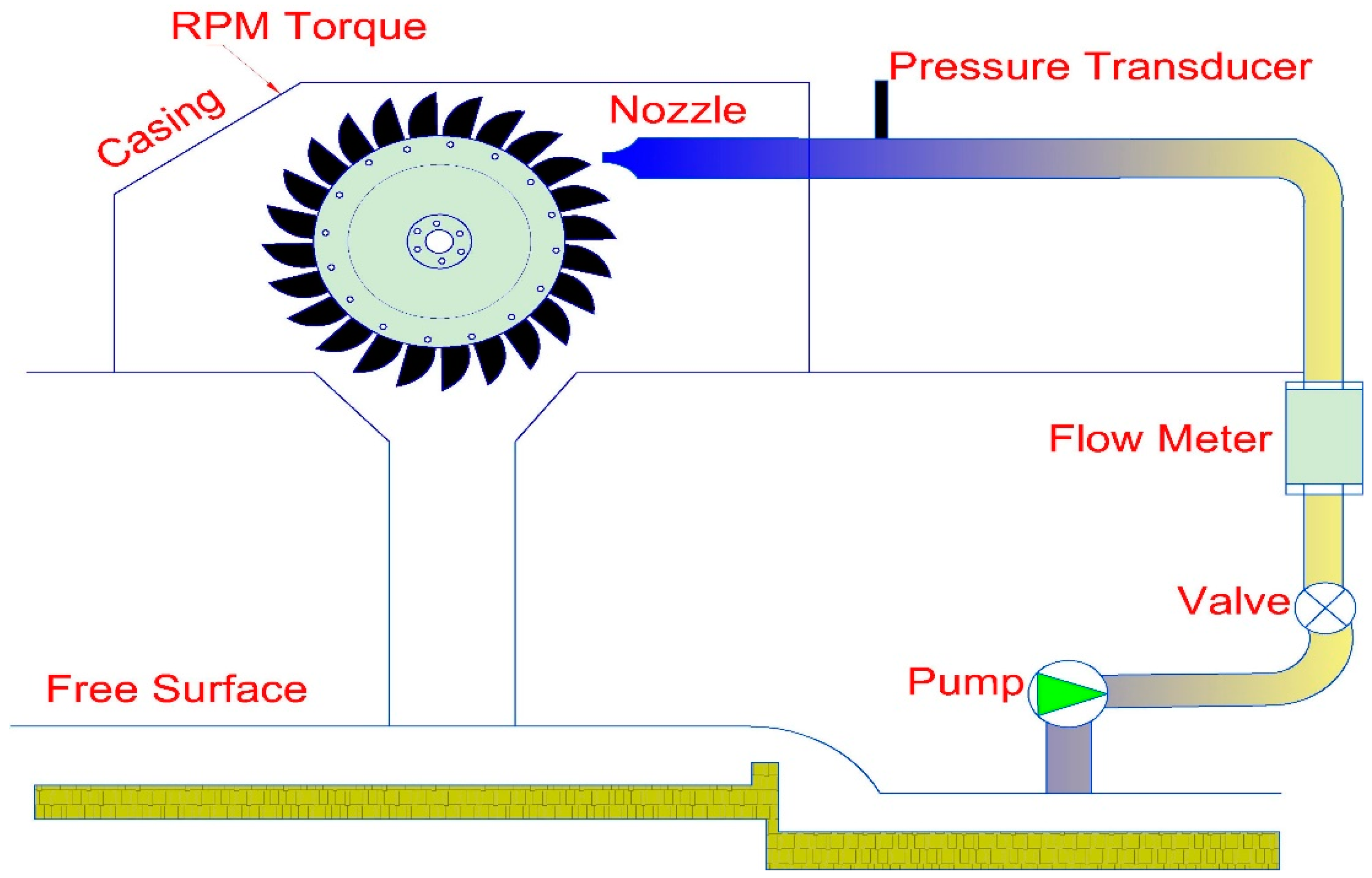
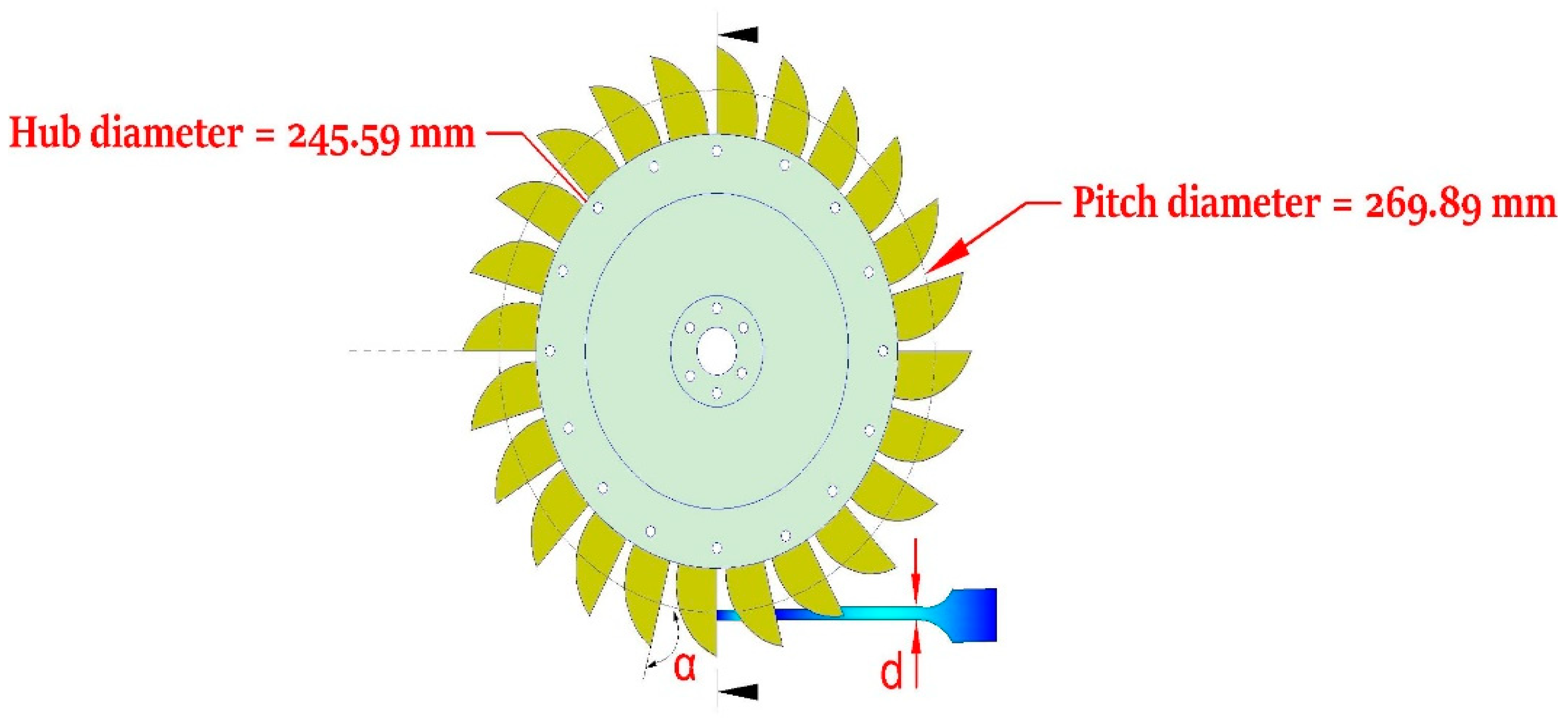
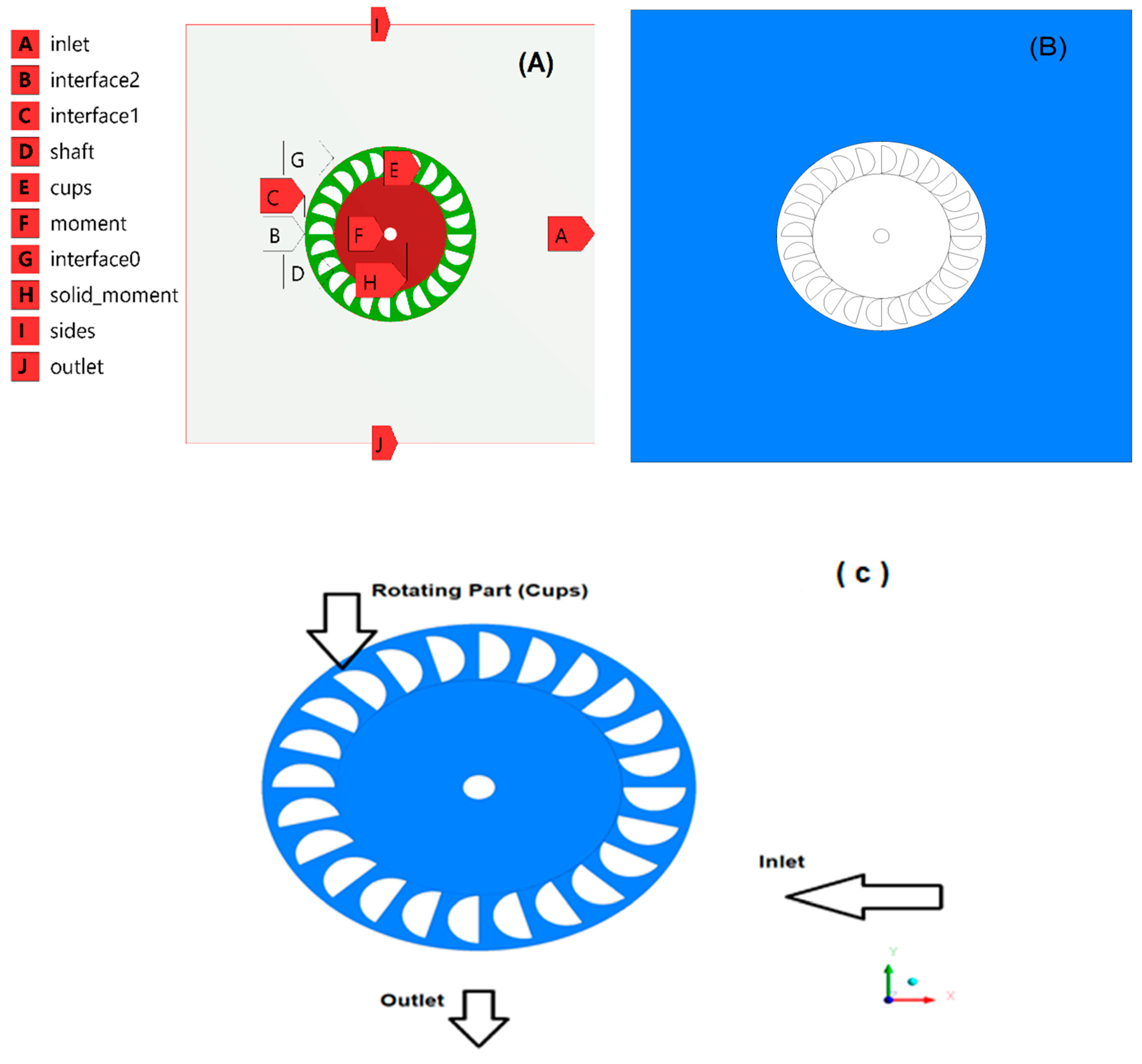


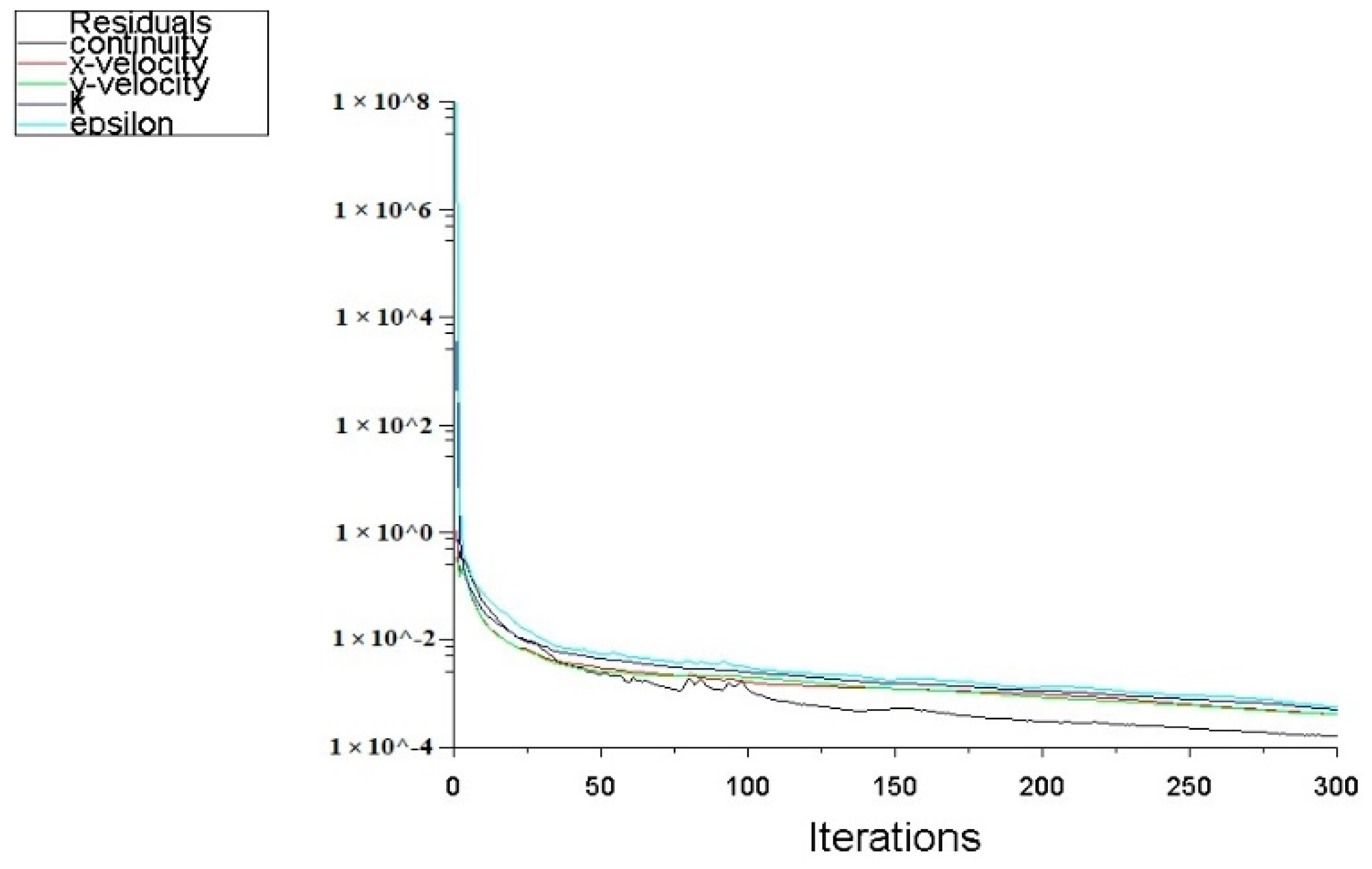
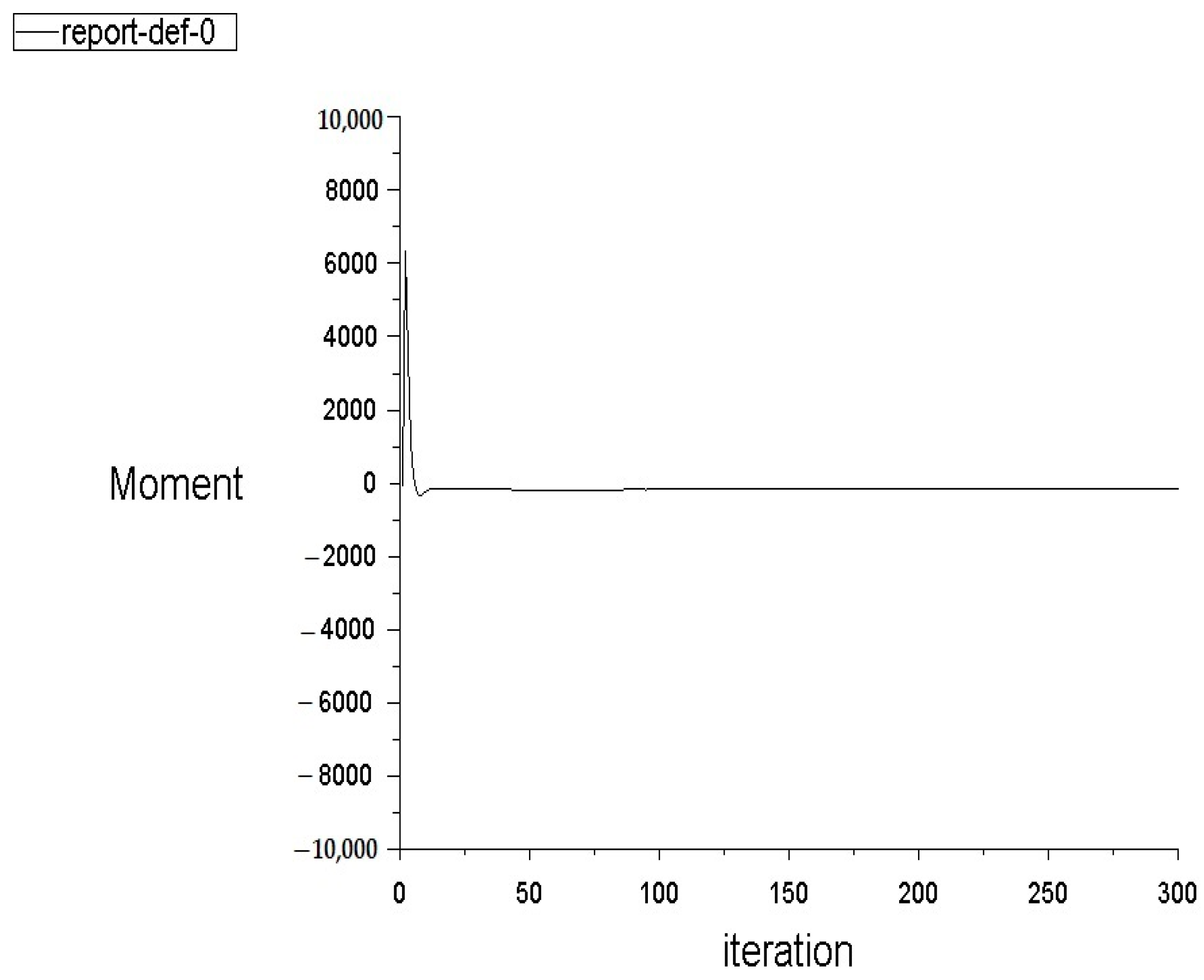
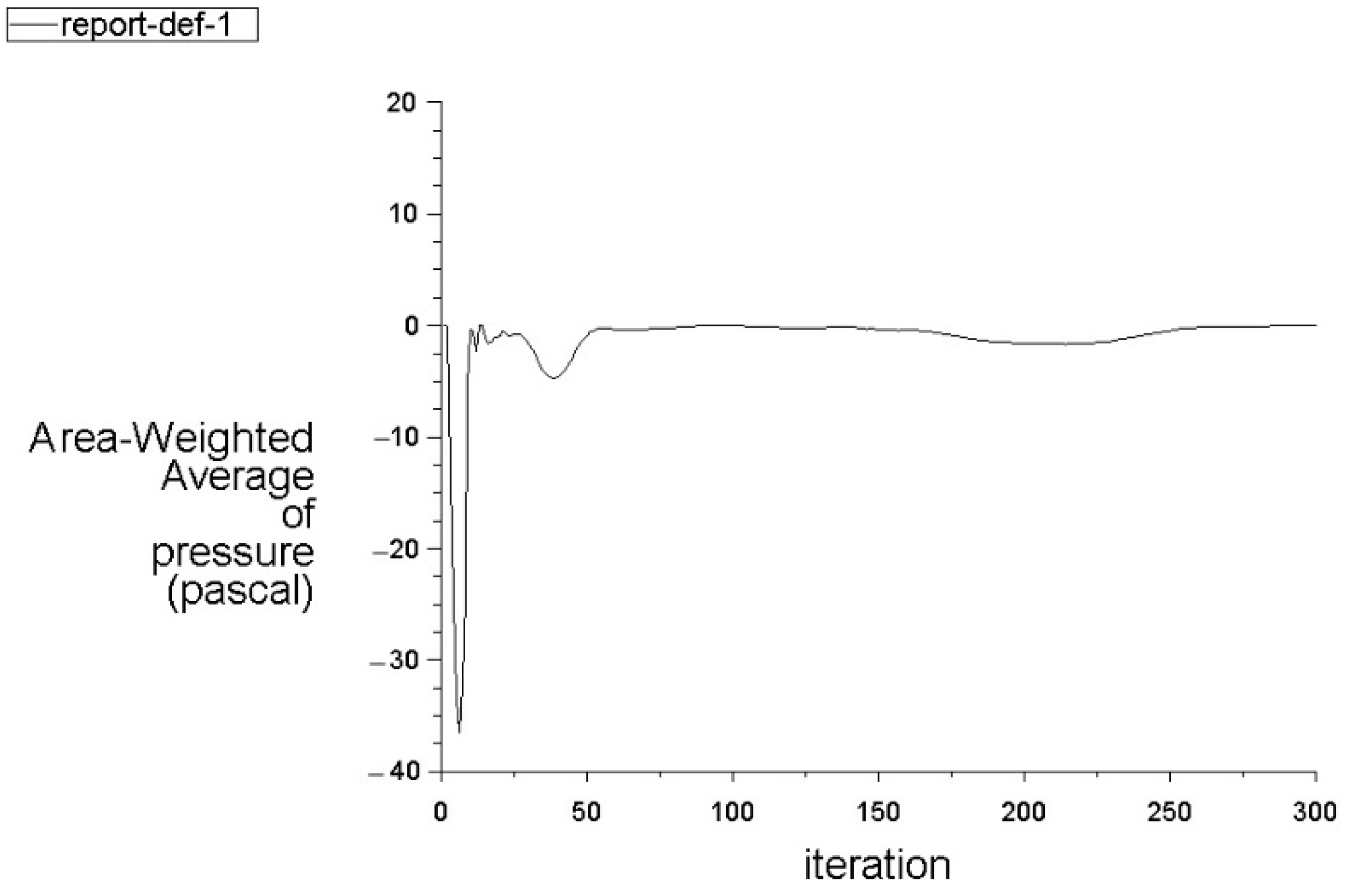


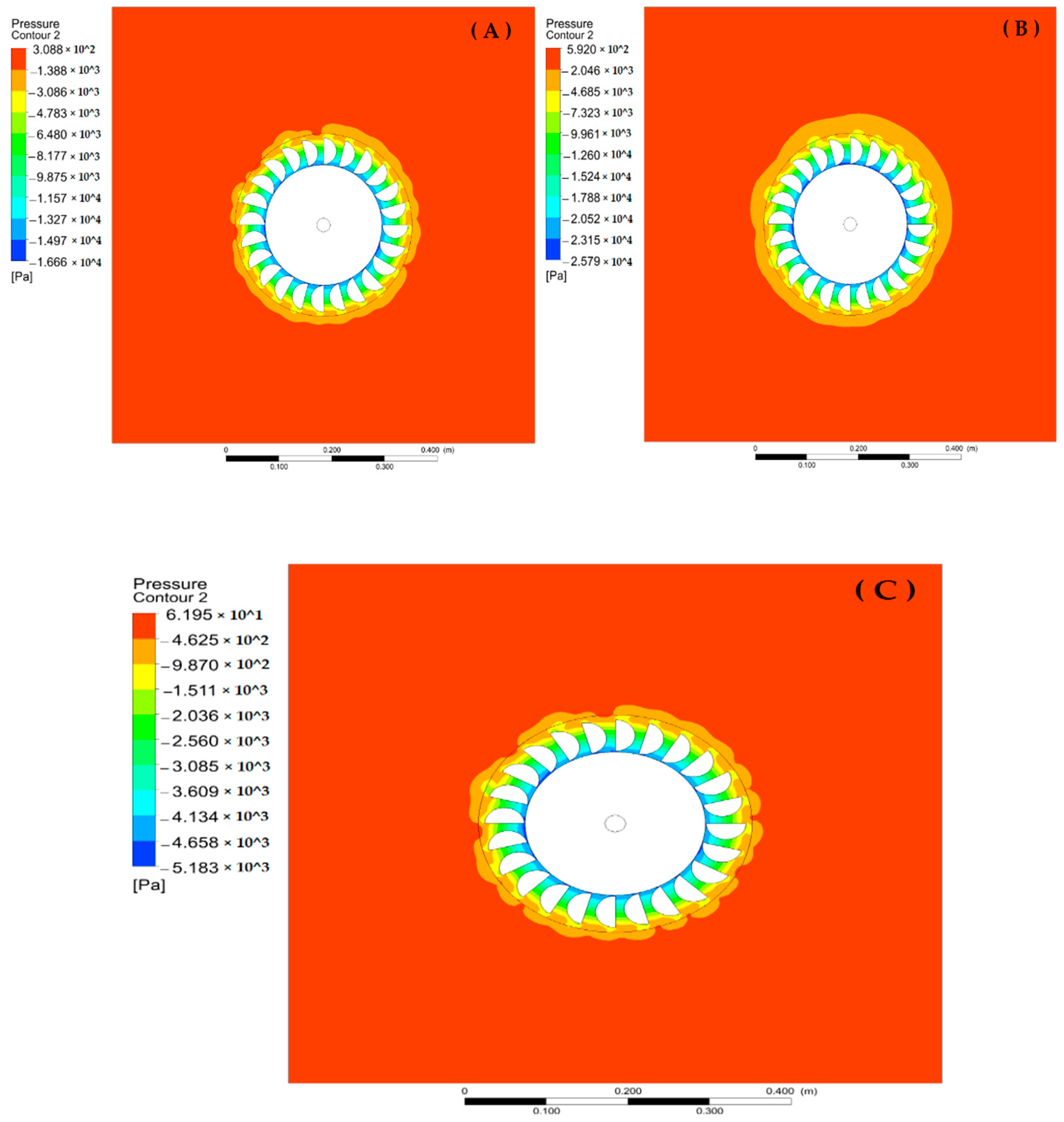
| Turbine geometry | Number of buckets | 24 |
| Turbine tip diameter (mm) | 269.89 | |
| Turbine hub diameter (mm) | 245.59 | |
| Bucket width (mm) | 61.6 | |
| Cup height (mm) | 48.6 | |
| Nozzle length (mm) | 70.5 | |
| Nozzle inlet diameter (mm) | 18.13 | |
| Nozzle outlet diameter (mm) | 8.87 | |
| Central hole diameter (mm) | 25.4 | |
| Flow parameters | Flow head (m H2O) | 15 |
| Flow rate (L × min−1) | 59 |
| Grid No. 1 | Grid No. 2 | Grid No. 3 | Grid No. 4 | Grid No. 5 | |
|---|---|---|---|---|---|
| Elements size at the turbine | 9 mm | 7 mm | 5 mm | 3 mm | 1 mm |
| Elements size at the outer domain | 12 mm | 10 mm | 8 mm | 6 mm | 3 mm |
| Number of elements | 6203 | 7544 | 11,178 | 20,131 | 92,276 |
| Average aspect ratio | 1.17 | 1.10 | 1.09 | 1.06 | 1.04 |
| Ω (rad/s) | T (N × m) | v (m/s) | Diff (%) | |
|---|---|---|---|---|
| Measured | Predicted | |||
| 24.514 | 0.2898561 | 0.249543 | 0.05 | 13.90797 |
| 44 | 0.4298546 | 0.380922 | 0.065 | 11.38352 |
| 53.952 | 0.591543 | 0.5426245 | 0.009 | 8.269644 |
| 59.924 | 0.6723872 | 0.6202608 | 0.009 | 7.752445 |
Publisher’s Note: MDPI stays neutral with regard to jurisdictional claims in published maps and institutional affiliations. |
© 2022 by the authors. Licensee MDPI, Basel, Switzerland. This article is an open access article distributed under the terms and conditions of the Creative Commons Attribution (CC BY) license (https://creativecommons.org/licenses/by/4.0/).
Share and Cite
Qasim, M.A.; Velkin, V.I.; Shcheklein, S.E.; Hanfesh, A.O.; Farge, T.Z.; Essa, F.A. A Numerical Analysis of Fluid Flow and Torque for Hydropower Pelton Turbine Performance Using Computational Fluid Dynamics. Inventions 2022, 7, 22. https://doi.org/10.3390/inventions7010022
Qasim MA, Velkin VI, Shcheklein SE, Hanfesh AO, Farge TZ, Essa FA. A Numerical Analysis of Fluid Flow and Torque for Hydropower Pelton Turbine Performance Using Computational Fluid Dynamics. Inventions. 2022; 7(1):22. https://doi.org/10.3390/inventions7010022
Chicago/Turabian StyleQasim, Mohammed A., Vladimir I. Velkin, Sergey E. Shcheklein, Abduljabbar O. Hanfesh, Talib Z. Farge, and Fadl A. Essa. 2022. "A Numerical Analysis of Fluid Flow and Torque for Hydropower Pelton Turbine Performance Using Computational Fluid Dynamics" Inventions 7, no. 1: 22. https://doi.org/10.3390/inventions7010022
APA StyleQasim, M. A., Velkin, V. I., Shcheklein, S. E., Hanfesh, A. O., Farge, T. Z., & Essa, F. A. (2022). A Numerical Analysis of Fluid Flow and Torque for Hydropower Pelton Turbine Performance Using Computational Fluid Dynamics. Inventions, 7(1), 22. https://doi.org/10.3390/inventions7010022








